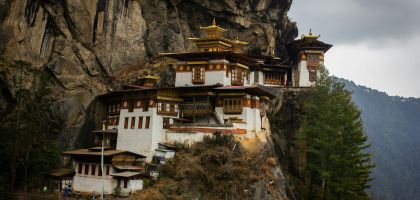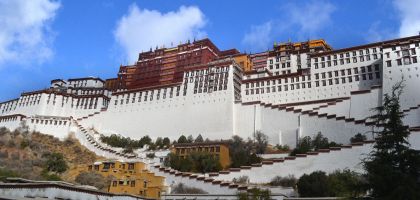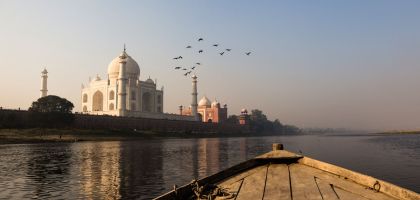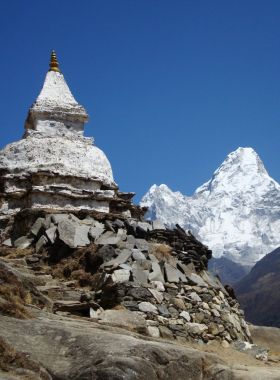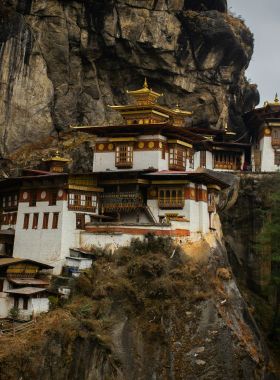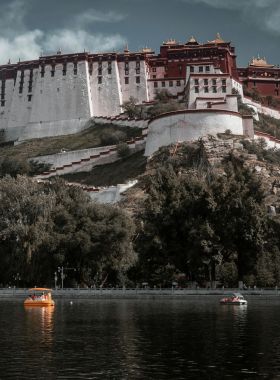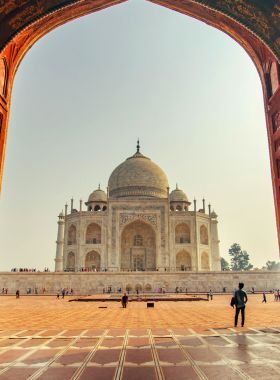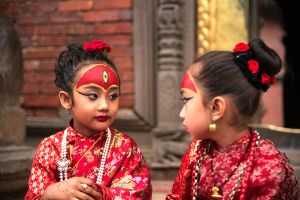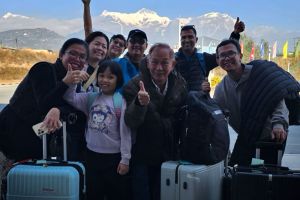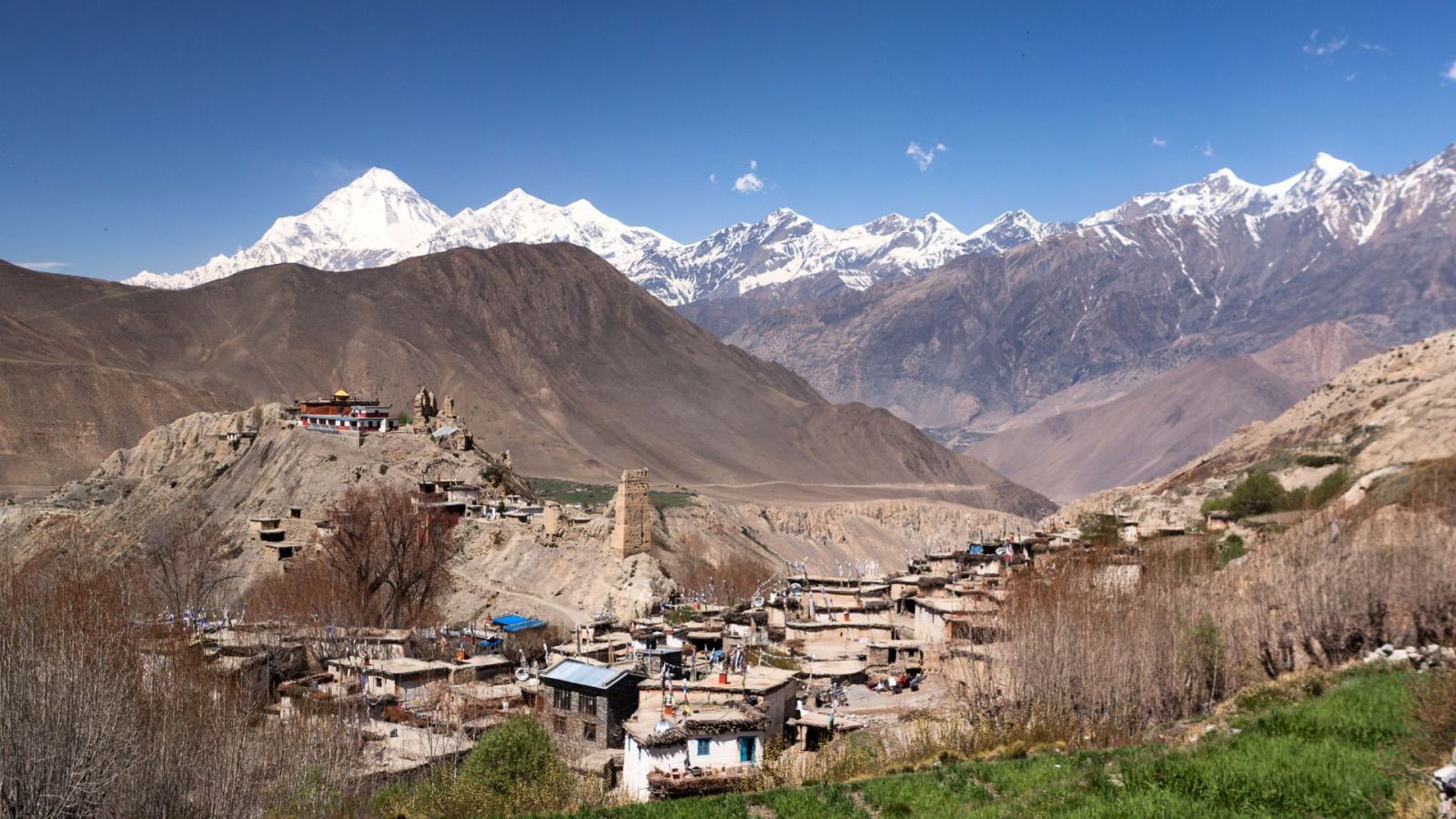Mustang Overland Tour: My Journey into the Last Forbidden Kingdom
I knew I was in for something unusual when our jeep lurched over a rock roughly the size of a small dog, and the driver didn’t flinch. He just grinned, shrugged like it was nothing, and turned up a scratchy old Nepali folk song.
“Nepali hun, pir ma pani bachna sakchu ni,” the singer wailed, “I’m Nepali, I can survive even in hardship.”
I chuckled, partly because the timing was too perfect, and partly because my spine was still rearranging itself from the last bump. I leaned my head against the dusty window and looked out.
What I saw was a scene ripped straight from another world. Wind-sculpted cliffs, bone-dry riverbeds, ochre hills melting into endless sky. Stark. Raw. Unfiltered.
Welcome to Mustang.

As an American who had once spent a few years in Nepal before working for a project (it was mostly in the hot Terai plains of Nepal), I thought I had a decent idea of what to expect. But after returning to the to Stowe, Vermont, my hometown, and being away for a while, coming back, this time to explore Mustang, felt like stepping into a whole new country. I had imagined spiritual revelations and mystical moments, maybe a few quiet reflections under a prayer flag. Needless to say, I signed up for the Mustang overland tour.
What I got instead was a dusty, bone-rattling road trip through some of the most surreal, otherworldly landscapes I’ve ever laid eyes on, and I loved every pothole-ridden second of it.
Trekking? No Thanks.
Before coming to Nepal, everyone told me, “You have to trek to Mustang. It’s the real way to experience it.”
Listen, I get it. Trekking is great. Walking in the mountains is poetic and all that. But I’m also very attached to my knees, and after one test hike in Kathmandu where I lost both my breath and dignity, I realized my journey to Mustang would be better done with four wheels and some shock absorbers.
Mustang Overland Tour
My Mustang overland tour began as soon as we left Pokhara just after dawn in a sturdy Toyota Land Cruiser, the kind of SUV you instinctively trust. It had a solid frame and a confident engine that promised it was ready for whatever the Himalayas had in store. The seats were comfortable, the ride steady, and in the soft morning light, it felt like we were setting out on something big.
The first stretch rolled gently out of the city on smooth tarmac, winding past terraced fields and small roadside tea stalls. But before long, the asphalt surrendered to gravel, and we found ourselves hugging the trail alongside the Kali Gandaki River. The water rushed steadily below us, flowing down towards the plains, while we climbed upward, slowly, steadily, sometimes grinding into low gear.
For about five or six kilometers, the road and river moved side by side, locked in a strange parallel dance, one flowing down with an easy grace, the other forcing us to climb in fits and starts. It couldn’t have been more than an hour, but the concentration it demanded from both driver and passenger made it feel longer. The air grew crisper, the wind stronger, and the cliffs began to close in around us.
Eventually, after what felt like an eternity of bumpy mountain roads and unforgettable views of the Annapurna range, we reached Marpha, a picture-perfect village famed for its whitewashed houses, wooden window frames, and tidy stone-paved alleys. The scent of apples drifted through the air, thanks to the orchards that thrive here, and shopfronts displayed bottles of the village’s famous apple brandy alongside neat rows of dried fruit.
We parked and wandered slowly through the settlement, past stacked piles of firewood and prayer wheels that spun lazily in the breeze. There was a calm here, a quiet pace that made it easy to linger. It felt almost reluctant to leave, but the road north still called.
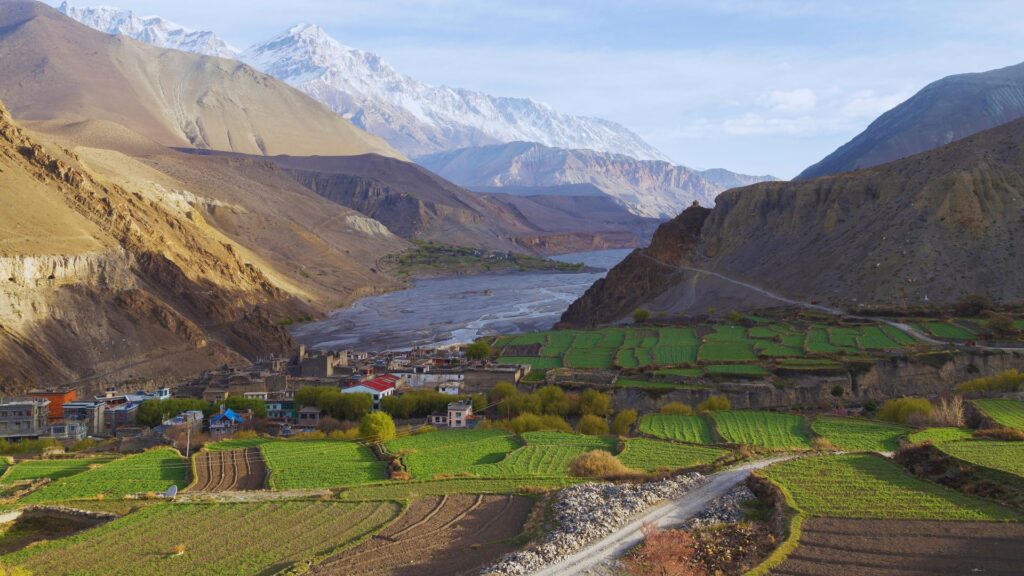
The cliffs drew higher, and soon Jomsom came into view—our next stop, and where I had my first conversation that truly set the tone for the rest of this Mustang journey.
The Jomsom Encounter
In the windswept town of Jomsom, where the air smells like dust and diesel, and the wind tries to steal your hat every five minutes, I struck up a conversation with a local man outside a tea shop. He looked like he’d seen a thousand tourists and forgiven all of them.
“You are American?” he asked.
“Yep.”
He squinted at my boots. “You are walking to Lo Manthang?”
I shook my head. “I’m going by jeep.”
He raised an eyebrow. “So… you want the Mustang view, but not the Mustang pain?”
We both laughed, and he nodded with mock approval. “Smart. The road is bad. But your legs will still thank you.”
That became the theme of my trip. Mustang views, minimal pain, maximum adventure.
Lo Manthang (Upper Mustang)- The Land of Dust and Dreams
Once we crossed into Upper Mustang, the terrain turned Martian. Giant cliffs carved by ancient winds, red and ochre canyons, white chortens dotting the ridges like crumbs from a divine snack. The sky felt closer somehow, the silence heavier.
The road, by the way, did not improve. We forded rivers that didn’t even have bridges, climbed switchbacks that made me rethink all my life choices, and cheered every time the jeep made it up another impossible incline. But the reward? The Kingdom of Lo !
What I discovered in Lo Manthang, perched at about 3,800 meters (12,500 feet), felt like stepping into a lost world. Known as the crown jewel of Upper Mustang, and Nepal’s “Forbidden Kingdom”, this ancient walled city looks as if it time-traveled straight out of a Tibetan history book.
Its mud-brick walls rise high against the clear blue sky, guarding narrow alleys lined with whitewashed houses and centuries-old monasteries like Jampa Lhakhang and Thupchen Gompa. Walking those alleys was like wandering through a dream, or maybe the set of a dusty Star Wars spinoff, where crimson-robed monks glide silently past prayer wheels spinning tirelessly, and the air carries the sharp, clean scent of burning juniper.
Lo Manthang is the cultural and spiritual heart of Mustang. Ancient royal palaces sit alongside humble homes, and traditions thrive unchanged, offering a rare glimpse into a living Tibetan world. Beyond the city walls lie wonders like the Sky Caves of Chhoser. These are massive cliffside caves carved thousands of years ago for meditation, shelter, and burial. Villages like Tsarang and Ghemi reveal a way of life shaped by yak herding, apple orchards, and barley terraces, all set against a backdrop of dramatic red cliffs that blaze brilliantly at sunrise and sunset. Long mani walls etched with Buddhist prayers lead you into peaceful hamlets, where iconic chortens mark sacred spaces beneath the towering peaks of Annapurna, Dhaulagiri, and Nilgiri.
What struck me most was the stunning contrast between the harsh, arid desert mountains and the lush green fields fed by irrigation. It’s a landscape of resilience, mystery, and breathtaking beauty—a place where nature and culture coexist in perfect harmony.
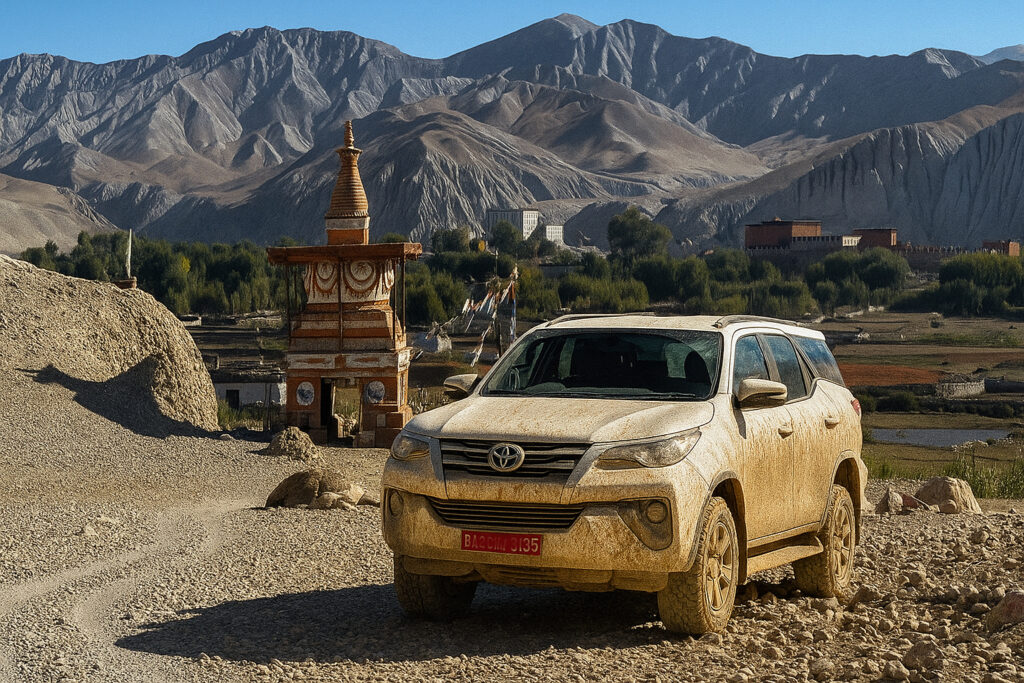
Why Overland Was Just Right
Somewhere between Kagbeni and Charang, as the sun dipped behind the Nilgiri peaks, I realized that going overland didn’t make the experience less authentic. I had time to stop, talk, take photos, snack (a lot), and not feel like I needed a nap and a new pair of knees by the end of the day.
Trekking may be romanticized, but bumping along this mad, glorious road with a hilarious driver and endless surprises was my kind of romance.
A Few Lessons from the Bumpy Trail
- Don’t wear white. You’ll come back the color of the road.
- Always say yes to butter tea. Even if it’s salty and confusing.
- Bring extra batteries. For your camera and your sense of humor.
- Talk to locals. They’ll remind you that Mustang is really, a living story.
Final Thoughts
Mustang is changing. Roads are being paved, Wi-Fi is creeping in, and more tourists are arriving. But for now, the kingdom still feels raw and wild, full of stories that aren’t yet in guidebooks.
So if you’re looking for a different kind of adventure. One, where the journey is wild, the dust is real, and the conversations are unforgettable, take the Mustang Overland Tour. Your knees might stay happy, but your soul? That’ll be forever changed. In the best w

